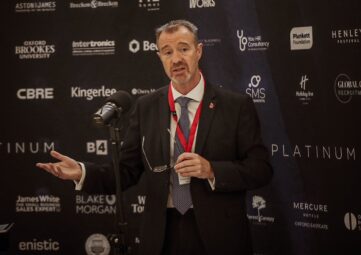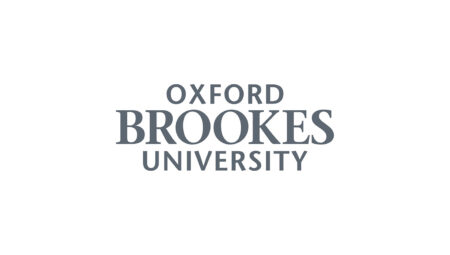
Olympics 2024: Getting the balance right in sports nutrition
As the countdown to the Olympics gets underway, the focus for athletes is on getting fitter, faster, and stronger, but at what cost? Qualified sports nutritionist Clare Shaw, a Senior Sports Lecturer at Oxford Brookes University, and a practitioner on the Sport and Exercise Nutrition register (SENr), is researching the impact of low energy availability in athletes for her PhD. Here she discusses her research and offers tips for balancing energy intake and output.
How do athletes end up with low energy availability?
Low energy availability occurs when dietary energy intake does not meet exercise energy expenditure, leading to an energy imbalance. For athletes, optimal energy for physiological functioning is defined as 45 kcal/kg fat free mass (FFM) per day, whereas energy availability of less than 30 kcal/kg FFM per day is a debated threshold for low energy availability in females and 25 kcal/kg FFM per day for males, as various body systems are substantially disturbed at this level(1). The nutritional requirements of athletes vary greatly depending on factors such as physical activity intensity, age, sex, training status, sports-specific demands, and environmental conditions.
This energy deficit can be unconscious or conscious and linked to eating disorders and disordered eating (2). Low energy availability can be nutritionally planned for and controlled for a performance goal or achieving an ideal body composition or weight. When low energy availability occurs intentionally or inadvertently over a prolonged duration, potentially serious health and performance consequences can follow.
Energy expenditure in athletes can range between 2500-8000 kcal/day, and in some ultra-endurance sports can be in excess of 10,000kcal/day. This is compared to the recommended NHS intake for non athletes of 2,000 calories a day for women and 2,500 calories per day for men.
What are the immediate and long-term consequences of low energy availability?
Immediately and while training for a particular event?
Within five days of low energy availability, the consequences become evident as the body’s systems become impaired. Prolonged low energy availability leads to more significant physiological adaptations and dysfunctions, affecting health and performance. Issues include impaired glucose and lipid metabolism, reduced immunity, sleep disturbances, and decreased training response, muscle strength, endurance, recovery, cognitive performance and skill.
Over the coming months and decades?
Long-term effects require further research. Persistent disruptions to physiological systems can lead to impaired bone health, reproductive dysfunction, decreased energy metabolism, gastrointestinal issues, and reduced cardiovascular and haematological health. Examples include bone stress injuries, menstrual irregularities, erectile dysfunction, reduced resting metabolic rate, and impaired glucose and lipid metabolism.
Low glycogen stores can lead to fatigue and low mood. Overall, low energy can lead to a decline in sports performance and an increased risk of injury.
Participants in which particular sports are at most risk of low energy availability?
Sports with high prevalence rates of low energy availability include endurance sports like running and cycling, aesthetic sports such as ballet, dance, and gymnastics, and weight class sports like rowing and combat sports. Any sport with extreme exercise energy expenditure, power-to-weight ratios, or desired leanness can put athletes at greater risk.
How has sports nutrition advice changed over the years?
Sports nutrition advice has evolved with scientific advancements and technology. Initially, the focus was on energy intake and protein, later shifting to carbohydrate loading and hydration. Recently, personalised nutrition, quality of food, gut health, plant-based alternatives, and sustainability have gained emphasis. Advances in technology and holistic approaches incorporating training, sleep management, and mental health are now integral to sports nutrition.
How would an Olympic competitor approach nutrition to ensure peak performance?
Olympic athletes follow individualised nutritional strategies tailored to their training and competition demands. Goals include maintaining high performance, enhancing recovery, achieving ideal body composition, and supporting overall health. Carbohydrates, proteins, and hydration play crucial roles, with specific targets and timings to optimise performance and recovery.
What can be done to help athletes get their nutrition and diet right?
Education and awareness via sports nutritionists, dietitians, and reliable resources are crucial. Customised meal plans, collaboration with coaches, and addressing food intolerances or cultural preferences ensure comprehensive support. Integrated approaches considering training schedules and dietary preferences help optimize nutrition.
Where can athletes get advice on getting their nutrition right?
Athletes should seek advice from registered sport nutritionists or dietitians, educational lectures, academic publications, and reliable online resources. Following evidence-based practices on social media by dietitians, sports nutritionists, and sports scientists can also be helpful.
What are your top three tips for athletes or anyone exercising for health benefits to help them get their nutrition right?
Consume enough energy and maintain a balanced diet with whole foods and variety.
Maintain hydration status with adequate fluid consumption.
Optimise recovery with a combination of proteins and carbohydrates.
Sports nutrition and recipe resources:
References:
Mountjoy, M., et al. (2018). ‘IOC consensus statement on relative energy deficiency in sport (RED-S): 2018 update’. British Journal of Sports Medicine, 52(1), pp.687-697.
Melin, A., et al. (2014). ‘The LEAF questionnaire: a screening tool for the identification of female athletes at risk for the female athlete triad’. British Journal of Sports Medicine, 48(1), pp.540-545.
From this author

Oxford Brookes University to showcase cutting-edge AI research at free week-long...
Oxford Brookes University will be showcasing the most recent developments and breakthroughs in artificial intelligence research at its annual Festival of AI this week. The festival runs from today until 7 June and includes a series of free workshops that will explore how AI can revolutionise schools, business and society.

Local business leaders in Oxfordshire tell Chancellor: Keep graduate visa route...
Oxfordshire Local Enterprise Partnership (OxLEP) has joined university and business leaders to warn the government against watering down or scrapping the graduate visa route.

Research, Innovation and Enterprise
Hello and welcome to the second edition of Research, Innovation and Enterprise: Shaping the Future, showcasing more of our colleagues’ work and research.


